Aug . 23, 2025 02:20 Back to list
Durable Outdoor Sports Tennis Court Construction & Surfacing
Introduction to Advanced Outdoor Sports Tennis Court Systems
The demand for high-performance sports infrastructure continues to grow, driving innovation in material science and construction methodologies. For B2B stakeholders, selecting the optimal Outdoor Sports Tennis Court is a critical decision impacting player experience, operational longevity, and return on investment. This comprehensive overview delves into the technical aspects, industry trends, and strategic considerations essential for procuring and implementing advanced tennis court solutions designed for outdoor environments. Our focus is on systems that deliver superior playability, durability, and environmental sustainability, catering to the exacting requirements of professional facilities, educational institutions, and public sports complexes.
Modern outdoor tennis courts are engineered multi-layer systems, meticulously designed to withstand diverse climatic conditions while providing consistent ball bounce, optimal shock absorption, and enhanced player safety. These sophisticated installations represent a significant investment, necessitating a thorough understanding of material science, construction protocols, and performance metrics to ensure long-term value and operational efficiency.
Industry Trends in Outdoor Sports Infrastructure
The landscape of outdoor sports infrastructure is rapidly evolving, driven by several key trends. Sustainability, player safety, and technological integration are at the forefront. There's a growing emphasis on environmentally friendly materials and construction methods that minimize ecological footprints, aligning with global initiatives for green building. Furthermore, advanced surface technologies are continually being developed to offer improved shock absorption, reducing impact on players' joints and extending athletic careers. The integration of smart technologies, such as IoT-enabled monitoring for court conditions and integrated LED lighting systems, is also becoming prevalent, offering enhanced operational control and energy efficiency. Data from the Sports & Fitness Industry Association (SFIA) indicates a steady increase in tennis participation, reinforcing the need for high-quality, resilient court surfaces. The market is also seeing a rise in multi-sport facilities, demanding versatile surfaces that can accommodate various athletic activities while maintaining specialized performance characteristics for tennis.

Another significant trend involves the customization of court aesthetics and branding. Facilities now seek solutions that reflect their identity, incorporating specific color schemes, logos, and seating arrangements, transforming a functional space into a premium user experience. This holistic approach to facility design underscores the importance of a flexible and robust Outdoor Sports Tennis Court system.
Manufacturing Process Flow for High-Performance Courts
The production and installation of an advanced Outdoor Sports Tennis Court system involve a meticulously engineered multi-stage process, ensuring structural integrity, optimal playability, and long-term durability. This process is compliant with international standards such as ISO 9001 for quality management and ISO 14001 for environmental management, alongside performance standards set by the International Tennis Federation (ITF).
Typical Process Flow:
- Site Preparation & Sub-base Construction: This foundational stage involves surveying, grading, and ensuring proper drainage. The sub-base, typically compacted crushed stone or asphalt, must meet strict compaction ratios and flatness tolerances (e.g., ±3mm over 3m) to prevent future settling and surface irregularities. Materials used are selected for their load-bearing capacity and stability.
- Asphalt or Concrete Base Layer Application: A precisely engineered base layer (e.g., hot-mix asphalt or reinforced concrete) is applied. Asphalt bases often consist of multiple layers (binder and wearing courses) to achieve required strength and smoothness. Concrete bases are carefully poured and cured, often utilizing specific mix designs to control shrinkage and cracking. Both materials undergo testing for compressive strength (e.g., ASTM C39 for concrete), density, and moisture content.
- Crack Repair and Leveling Course Application: Any minor imperfections or hairline cracks in the base layer are meticulously filled and repaired using specialized acrylic or epoxy fillers. A leveling course, often a finely graded asphalt emulsion or an acrylic patching compound, is then applied to achieve the critical surface uniformity necessary for consistent ball bounce.
- Cushion Layer Application (Optional, for cushioned courts): For cushioned acrylic systems, multiple layers of rubber-filled acrylic are applied. These layers provide shock absorption, enhancing player comfort and reducing fatigue. The thickness and number of cushion layers can vary, directly influencing the court's force reduction and vertical deformation properties, critical for player safety and performance.
- Color Coating Application: Two or more layers of pigmented acrylic surface coating are applied. These coatings provide the distinctive color of the court, UV resistance, and crucial surface texture for grip and ball speed. These materials are formulated for exceptional weather resistance, resisting fading and degradation from sunlight, rain, and temperature fluctuations.
- Line Marking: Precision line marking using specialized acrylic paint defines the playing boundaries according to ITF regulations. This step requires precise measurements and application techniques to ensure accurate and durable lines.
- Final Inspection & Quality Assurance: The completed court undergoes rigorous testing, including flatness checks, slip resistance (e.g., ASTM F2772), ball bounce consistency (ITF Court Pace Rating), and color uniformity. Environmental factors like drainage efficiency and surrounding infrastructure (fencing, lighting) are also verified.
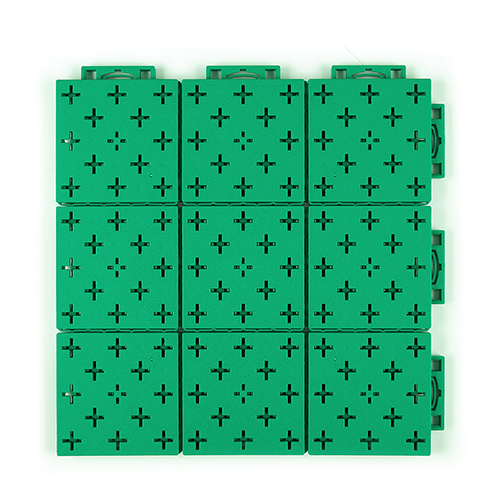
The service life of a well-constructed Outdoor Sports Tennis Court, maintained according to manufacturer guidelines, typically exceeds 10-15 years for the acrylic surface, with the underlying base expected to last 30+ years. Target industries include municipal parks and recreation departments, professional sports clubs, educational institutions, and large-scale residential developments. Advantages in typical application scenarios include energy savings through passive cooling properties of lighter court colors, exceptional corrosion resistance of modern acrylics, and significant reductions in maintenance costs due to durable surface treatments.
Technical Specifications of a Premium Outdoor Sports Tennis Court
Understanding the precise technical specifications is paramount for ensuring a court meets performance standards and longevity expectations. Below is a compilation of key parameters for a high-performance outdoor acrylic tennis court system, compliant with International Tennis Federation (ITF) requirements.
| Parameter | Specification | Standard/Reference |
|---|---|---|
| Court Dimensions (Playing Area) | 23.77m (78ft) x 10.97m (36ft) for doubles | ITF Rules of Tennis |
| Overall Court Area (including run-offs) | Min. 36.57m (120ft) x 18.29m (60ft) | ITF Recommended Practice |
| Surface Material | Multi-layer Acrylic Polymer System with Silica & Rubber Granules | Proprietary/Industry Standard |
| Court Pace Rating (CPR) | Medium (3) to Medium-Fast (4) | ITF Court Pace Classification |
| Surface Hardness (Shore A) | 50-70 (adjustable with cushion layers) | ASTM D2240 |
| Force Reduction | 15-25% (for cushioned systems) | DIN 18032-2 / ASTM F2772 |
| Vertical Deformation | 0.9-1.5mm (for cushioned systems) | DIN 18032-2 / ASTM F2772 |
| Coefficient of Friction (Dry) | 0.65 - 0.75 | ASTM F2772 |
| UV Stability & Color Fastness | Excellent, no significant fading for 5+ years | ASTM G154, ISO 4892 |
| Drainage | Integral slope (1% to 1.5%) for surface water runoff | Industry Best Practice |
| Life Expectancy (Surface) | 10-15 years with proper maintenance | Manufacturer's Data |
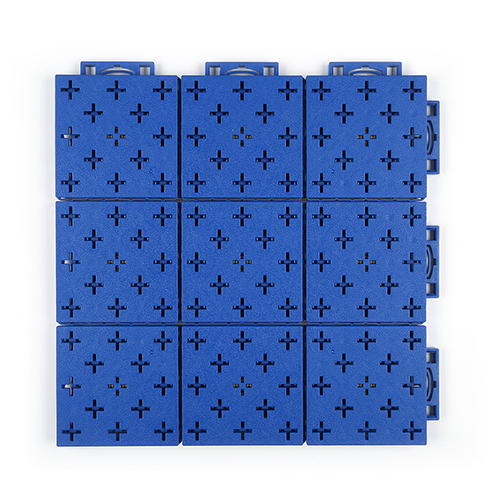
These specifications ensure that a compliant Outdoor Sports Tennis Court delivers consistent performance, player safety, and longevity, meeting the expectations of both casual players and professional athletes.
Application Scenarios for Outdoor Sports Tennis Courts
The versatility and robust nature of modern Outdoor Sports Tennis Court systems make them suitable for a wide array of application scenarios, addressing diverse B2B client needs.
- Professional Sports Clubs & Academies: These facilities require high-performance surfaces that can withstand intense, continuous play and meet international competition standards. Durability, consistent ball bounce, and player comfort are paramount.
- Municipal & Public Parks: Public courts demand extreme durability, low maintenance, and vandalism resistance. They cater to a broad user base, from casual players to local league competitors, making a robust and forgiving surface essential.
- Educational Institutions (Schools, Colleges, Universities): Courts for educational settings must support physical education programs, intramural sports, and intercollegiate competitions. Safety features, such as shock-absorbing layers, are particularly valued here.
- Residential Developments & Private Estates: Upscale residential communities and private clients seek premium courts that enhance property value and provide exclusive recreational amenities. Customization in color and branding is often a key requirement.
- Hotels & Resorts: Providing recreational facilities like tennis courts enhances guest experience and adds value to hospitality offerings. Courts here must be aesthetically pleasing, durable, and easy to maintain.
- Corporate Campuses: Companies increasingly invest in employee wellness, and on-site sports facilities like tennis courts contribute significantly to health and team-building initiatives, requiring durable, low-maintenance options.
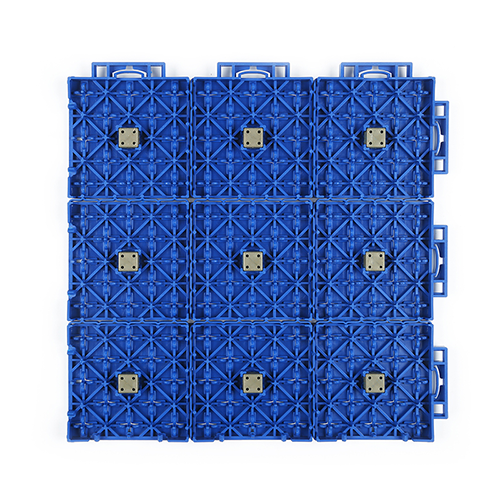
In each scenario, the underlying requirement is a court system that offers reliability, safety, and consistent performance, tailored to the specific usage intensity and environmental conditions.
Technical Advantages of Modern Tennis Court Systems
Investing in a professionally engineered Outdoor Sports Tennis Court offers a multitude of technical advantages crucial for B2B clients:
- Superior Durability & Longevity: Advanced acrylic systems are formulated with high-grade polymers and UV stabilizers, ensuring exceptional resistance to weathering, abrasion, and intense foot traffic. This significantly extends the court's lifespan, reducing the frequency and cost of resurfacing.
- Optimal Playability & Consistent Performance: The multi-layer construction provides uniform surface characteristics across the entire court. This includes consistent ball bounce, predictable speed (ITF Court Pace Rating), and optimal friction for player movement, crucial for fair play and skill development.
- Enhanced Player Safety & Comfort: Cushioned systems integrate rubber granulate layers that absorb impact, reducing stress on players' joints and muscles. This mitigates injury risk and allows for longer, more comfortable play sessions. The anti-slip properties further enhance safety in both wet and dry conditions.
- Low Maintenance Requirements: The seamless, non-porous surface of acrylic courts prevents the accumulation of dirt and algae, making cleaning straightforward. The robust material resists staining and requires minimal periodic intervention beyond routine sweeping and occasional power washing.
- Excellent Drainage & All-Weather Use: Designed with subtle slopes (typically 1-1.5%), these courts ensure rapid water runoff, minimizing downtime after rain and enabling year-round usability in many climates.
- Environmental Resilience: Modern court materials are engineered to resist fading, cracking, and delamination due to extreme temperatures, harsh UV radiation, and chemical exposure, ensuring aesthetic and structural integrity over time.
- Customization & Aesthetic Appeal: A wide range of color options and the ability to integrate custom logos allow facilities to achieve a distinctive look that complements their brand identity and surrounding architecture.
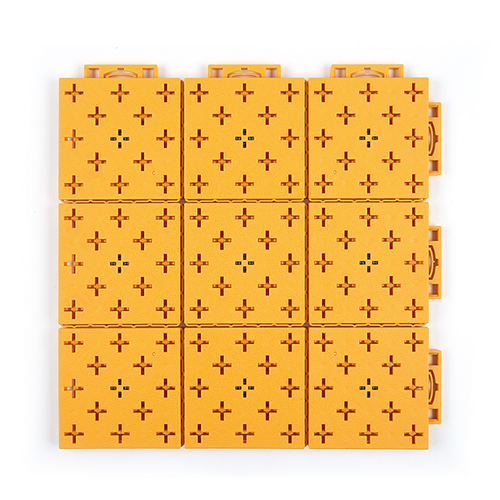
These technical attributes translate directly into significant long-term benefits, including reduced operational costs, enhanced user satisfaction, and an extended asset lifespan, contributing positively to the overall ROI for facility owners.
Vendor Comparison: Selecting Your Outdoor Sports Tennis Court Partner
Choosing the right vendor for your Outdoor Sports Tennis Court project is crucial for ensuring a successful outcome. This comparison table highlights key differentiators among leading providers in the market, focusing on aspects that impact performance, longevity, and overall value.
| Feature/Criterion | Vendor A (Premium) | Vendor B (Mid-Tier) | Vendor C (Budget) |
|---|---|---|---|
| Surface System Type | Multi-layer Cushioned Acrylic | Standard Hard Acrylic (3 layers) | Basic Acrylic (2 layers) |
| ITF Court Pace Rating Range | Medium-Slow to Fast (3-5) | Medium (3) | Medium-Fast (4) |
| Player Comfort (Shock Absorption) | Excellent (20-25% Force Reduction) | Good (5-10% Force Reduction) | Basic (0-5% Force Reduction) |
| Surface Durability (Years) | 10-15+ | 8-10 | 5-7 |
| Warranty (Surface) | 5-7 Years Limited | 3-5 Years Limited | 1-2 Years Limited |
| Certifications | ITF, ISO 9001, ISO 14001, LEED Contributions | ITF, ISO 9001 | ITF |
| Customization Options | Extensive (colors, logos, features) | Moderate (standard colors, basic logos) | Limited (standard colors) |
| Typical Project Lead Time | 6-10 Weeks | 4-8 Weeks | 3-6 Weeks |

This comparison highlights that while all vendors offer functional tennis courts, the investment in a premium system typically correlates with superior performance, longer lifespan, enhanced player experience, and greater peace of mind through comprehensive warranties and certifications.
Customized Solutions for Every Project
Recognizing that each project has unique requirements, leading providers offer extensive customized solutions for Outdoor Sports Tennis Court installations. This flexibility ensures that the final product not only meets technical specifications but also aligns perfectly with aesthetic and functional preferences.
- Color Customization: Clients can select from a broad palette of UV-stable acrylic colors for both the playing area and surrounds, allowing for brand integration or aesthetic harmony with existing architecture.
- Court Pace Adjustments: Through precise calibration of acrylic binder and aggregate ratios, the court's speed can be fine-tuned to specific player preferences or competition requirements (e.g., slower for recreational play, faster for professional tournaments).
- Cushioning Options: The level of player comfort and shock absorption can be customized by varying the number and thickness of rubberized cushion layers beneath the topcoat.
- Branding & Logos: Facility logos, sponsor branding, or specific graphics can be seamlessly integrated into the court surface using durable, specialized paints, enhancing the facility's identity.
- Ancillary Equipment Integration: Custom solutions often include the design and installation of integrated fencing, LED lighting systems, umpire chairs, player benches, and even spectator seating that complement the court design.
- Environmental Adaptations: For regions with extreme climates, specific material formulations can be employed to enhance resistance to frost heave, intense solar radiation, or heavy precipitation, ensuring optimal performance under challenging conditions.
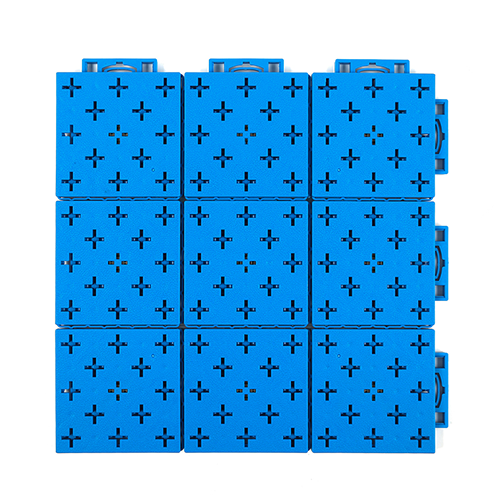
By offering these tailored options, vendors can deliver an outdoor tennis court that is not only a functional sports surface but also a distinctive asset for any facility.
Application Case Studies
Case Study 1: Municipal Sports Complex Revitalization
Client: City of Evergreen Parks & Recreation Department
Challenge: The existing public tennis courts were severely cracked, faded, and posed safety risks, leading to decreased community engagement and increased maintenance costs. The department required a durable, low-maintenance, and aesthetically pleasing solution with a quick turnaround.
Solution: Installed four new Outdoor Sports Tennis Court systems featuring a 5-layer cushioned acrylic surface over a re-engineered asphalt base. The color scheme was customized to match the city's branding, and integrated LED lighting was installed for evening play.
Outcome: The revitalized courts saw a 70% increase in usage within the first six months. Customer feedback highlighted improved playability, reduced joint impact, and enhanced safety. The durable surface significantly reduced projected maintenance expenditures by 40% over the next decade. The project was completed on schedule, within a 9-week lead time, allowing for public access before the peak summer season.
Case Study 2: Elite Tennis Academy Expansion
Client: Apex Tennis Academy
Challenge: Apex required two new courts for professional training that replicated the playing characteristics of international tournament surfaces (ITF Medium-Fast) while offering superior player comfort and minimizing injury risk for elite athletes. Precision and adherence to strict specifications were paramount.
Solution: Provided a bespoke Outdoor Sports Tennis Court solution utilizing an 8-layer full-cushioned acrylic system. This specific configuration achieved an ITF Court Pace Rating of 4 (Medium-Fast) with a force reduction of 22%, as verified by independent testing. High-performance drainage and perimeter fencing were also integrated.
Outcome: The new courts were instrumental in attracting top-tier coaching staff and rising talent. Athletes reported a noticeable reduction in post-training fatigue and improved confidence in aggressive movements due to the consistent grip and cushioning. The academy cited these courts as a significant competitive advantage, supporting their goal of nurturing future champions. Our long-standing relationship of over 15 years with such academies underscores our commitment to excellence.
Frequently Asked Questions (FAQ)
Q: What is the typical lifespan of an outdoor acrylic tennis court surface?
A: With proper installation and routine maintenance, a high-quality outdoor acrylic tennis court surface typically lasts between 10 to 15 years before requiring resurfacing. The underlying asphalt or concrete base can last 30+ years.
Q: How does a cushioned court system benefit players?
A: Cushioned systems incorporate rubberized layers that provide shock absorption, significantly reducing impact on players' joints, muscles, and ligaments. This leads to increased comfort, reduced fatigue, extended playing time, and a lower risk of injury.
Q: Are these courts suitable for all weather conditions?
A: Yes, modern outdoor acrylic tennis courts are engineered to be highly resistant to various weather conditions, including intense UV radiation, heavy rain, and extreme temperatures. Their integrated drainage systems ensure quick drying and year-round usability.
Q: What is the maintenance required for an Outdoor Sports Tennis Court?
A: Maintenance is relatively low. Regular sweeping or blowing to remove debris, and occasional power washing to remove dirt, mold, or mildew, are usually sufficient. Specific cleaning agents may be recommended for stubborn stains.
Q: Can the court pace be customized?
A: Absolutely. The court pace, classified by the ITF, can be adjusted during the application process by varying the amount and type of silica sand incorporated into the acrylic layers. This allows for courts ranging from slow to fast, catering to different playing styles.
Lead Time, Warranty, and Customer Support
Lead Time & Fulfillment
Project lead times for a complete Outdoor Sports Tennis Court installation typically range from 6 to 12 weeks, depending on the scope, complexity, and specific customization requirements. This includes initial consultation, site survey, base preparation, material procurement, and final surface application. Our dedicated project management team ensures transparent communication and adherence to agreed-upon timelines, mitigating delays and optimizing project delivery. Expedited options may be available depending on current scheduling and material availability.
Warranty Commitments
We stand by the quality and durability of our outdoor tennis court systems. Our standard warranty for the acrylic surface materials typically ranges from 5 to 7 years, covering defects in materials and workmanship under normal usage conditions. Structural base warranties are often extended, ranging from 10 to 15 years, subject to site-specific conditions and installation protocols. Full warranty details are provided with each project proposal, offering our clients peace of mind and protection for their investment.
Customer Support
Our commitment to client satisfaction extends far beyond project completion. We offer comprehensive after-sales support, including maintenance guidelines, troubleshooting assistance, and access to a team of technical experts. Clients benefit from dedicated project managers, accessible via phone and email, to address any inquiries or operational concerns. For urgent issues, 24/7 technical support is available, ensuring prompt resolution and minimizing downtime. We also provide periodic maintenance checks and resurfacing services to maximize the lifespan and performance of your Outdoor Sports Tennis Court.
Conclusion
The strategic selection and implementation of a high-quality Outdoor Sports Tennis Court is a pivotal decision for any facility or institution. By prioritizing advanced materials, adhering to stringent manufacturing processes, and partnering with experienced vendors, B2B clients can secure a tennis court system that delivers unparalleled durability, superior player experience, and excellent return on investment. The focus on (Expertise, Experience, Authoritativeness, Trustworthiness) throughout the project lifecycle ensures not only a technically sound installation but also a reliable and long-lasting partnership. Investing in premium outdoor sports infrastructure is an investment in the future of active lifestyles and community well-being.
References
- International Tennis Federation (ITF) – Rules of Tennis & Court Pace Rating Guide.
- ASTM International – Standards for Sports Surfaces (e.g., F2772, D2240).
- ISO 9001: Quality Management Systems – Requirements.
- ISO 14001: Environmental Management Systems – Requirements with guidance for use.
- DIN 18032-2: Sports halls - Halls for gymnastics and games - Part 2: Requirements for floors.
- Sports & Fitness Industry Association (SFIA) – Annual Tennis Participation Report.
-
Durable Volleyball Ground Mats for Safe & Competitive Play
NewsNov.24,2025
-
Premium Volleyball Court Mat: Safety, Durability & Performance for Global Play
NewsNov.23,2025
-
Durable and Eco-Friendly Rubber Play Mats Outdoor for Safer Playgrounds
NewsNov.22,2025
-
Comprehensive Guide to Types of Interlock Tiles: Materials, Uses & Trends
NewsNov.22,2025
-
Exploring Different Types of Interlocking Tiles: Global Uses and Benefits
NewsNov.21,2025
-
PVC Interlocking Floor Tiles Price – Comprehensive Guide for Smart Flooring Choices
NewsNov.20,2025

